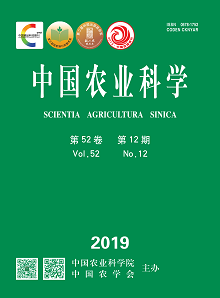【Objective】 In view of the prominent problem that corn straw to the field seriously affects the quality of wheat (Triticum aestivum L.) seedlings under the condition of double cropping per year of Huang-Huai Plain, appropriate soil tillage techniques were explored to improve quality of wheat seedlings and ultimately to increase wheat yield. 【Method】The experiment was carried out at Huanggang village, Xindian town, Xinzheng city, Henan province for 2 consecutive years (from 2016 to 2018). By using a randomized block design, 8 treatments were carried out by combining three factors of plowing, harrow and compacting: deep depth tillage + rotary tillage (DT + RT; DT: 30 cm, RT: 15 cm), deep tillage + harrow (DT + H), deep depth tillage + rotary tillage + compacting (DT + RT + C), rotary tillage (RT), rotary tillage + harrow (RT + H), rotary tillage + compacting (RT + C), and rotary tillage + harrow +compacting (RT + H + C). Emergence rate and seedling quality of wheat were investigated, root characteristics were investigated during wintering stage, re-growing stage, jointing stage, heading stage, grain filling stage, dough stage, and grain characters, yield and its components were analyzed during the filling period, respectively. 【Result】20 days sowing, quality of seedlings in different soil tillage treatments was significantly different. In rotary tillage treatments, emergence uniformity was higher than that in deep tillage treatments, while in deep tillage method, seedling emergence rate, basic seedlings and plant height were higher than those in rotary tillage method. Under the same plowing and compacting, emergence rate in harrow treatment emergence was 1.0%-5.7%; Under the same plowing and harrow, emergence rate in compacting treatment emergence was 0.06%-8.3%. At the same time, after deep depth tillage, seedling deficiency and wedging were rarely seen. Cumulative length of seedling deficiency and wedging under RT treatment was the highest, and the average length of the two years was 55 cm. From the wintering to dough stage, root activity in different soil tillage treatments showed a "high-low-high-low" trend, and it was the highest in treatment “DT + H + C”. In wintering and at jointing stage, root activity was increased after treated with compacting and harrow compared with that in treatments with neither compacting nor harrow. Secondary roots per plant reached the maximum in DT + H + C treatment at heading stage with the highest values were 45.2 and 40.2 in 2017 and 2018, respectively. After treated with harrow, secondary roots per plant were increased by 14.8% compared with those in treatments without harrow. After compacted treatment, secondary roots per plant were increased by 12.2% compared with those in treatments without compacting. Grain filling rate in DT + H + C treatment was significantly higher than that under other treatments during 5-10 days after anthesis, and reached its peak at 20 days after anthesis. Grain filling rate of DT + H + C treatment was higher than that under other treatments, while grain filling rate in DT + H + C treatment was higher than that under other treatments, and grain filling rate under DT + H + C treatment was 19.4% higher than that under other treatments (α=0.05). During grain filling stage, 1000-grain weight increased the most at 0-15 days after anthesis; Under DT + H + C treatments, it was increased the most; Under DT + RT treatments, it was increased the least; under DT + H + C treatments, it increased the most at 25-30 days after anthesis, which was 20.8% higher than that when treated by RT. According to the effects of different tillage techniques on grain yield and its components, the highest grain yield was obtained under DT + H + C treatment. Ears per unit area, kernels per ear and 1000-grain weight were not regular under harrow milling and repressing treatment, and grain yield increased obviously, with a range of 1.4%—12.2%. Economic benefits, in RT + H, RT + H + C, RT + C, DT + H + C, or DT + H treatment were all higher than those in RT treatment compared with the previous farming methods in the local area. Among them, the highest economic benefits was produced under DT + H + C treatment, and the two-year average was 12.3% higher than that under RT treatment【Conclusion】Under the current condition of two cropping systems in the Huang-Huai plain, different soil tillage techniques affected seedling quality, rotation tillage was beneficial to uniformity of seedling emergence, while deep tillage was beneficial to increasing seedling emergence rate, seedling evenness and plant height, laying a foundation for the formation of strong seedlings before wintering. The deep tillage deepened soil surface layer, which was beneficial to rooting, increased secondary roots and root activity in soil surface layer, and indirectly affected grain yield. Considering root system growth, grain filling rate, grain weight formation and yield performance, it was concluded that DT + H + C soil tillage technique was the best choice in Huang-Huai area.









